Don Cameron's architectural photography inspires furniture design in Sydney exhibition
Don Cameron's creative repertoire spans music video direction, design and photography. Here, Deyan Sudjic explores how he combines his skillset in ‘Translations', at Sydney's Gallery Sally Dan-Cuthbert (until 2 October 2022)
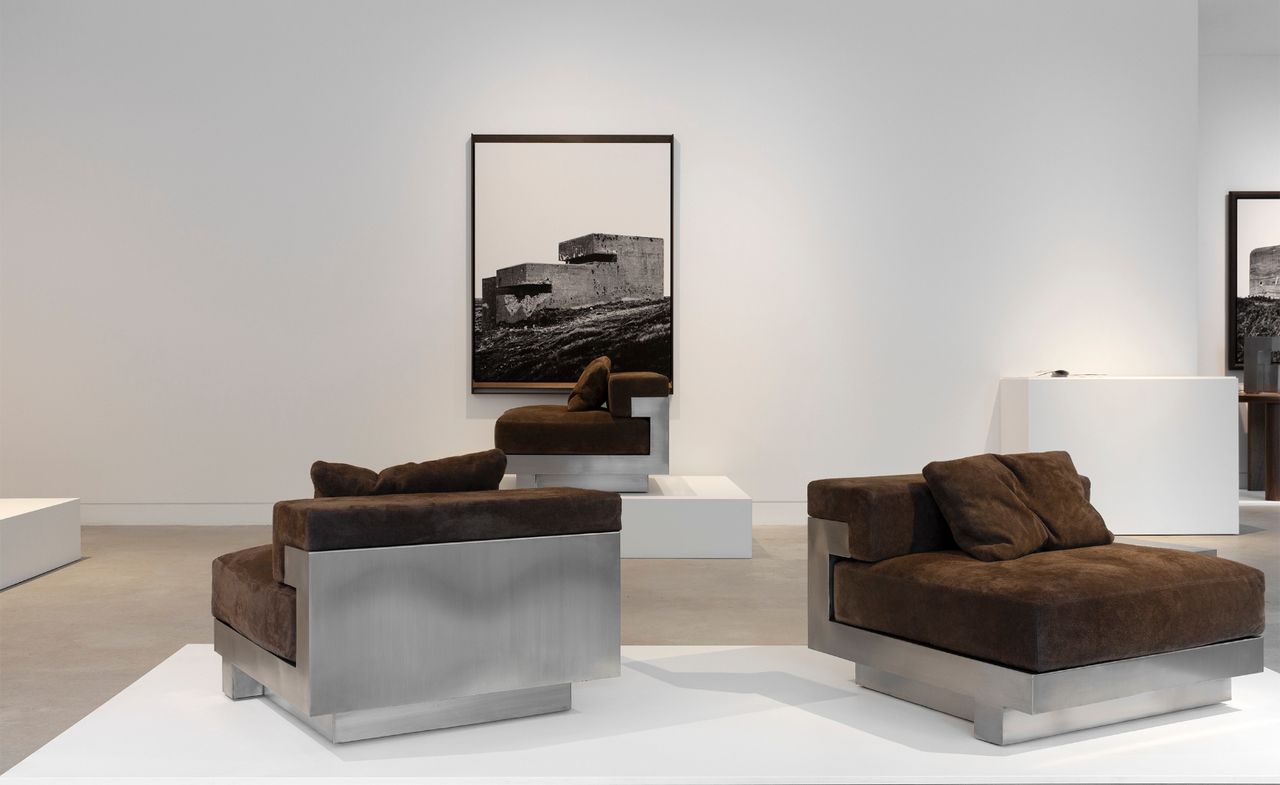
Don Cameron is an artist whose work defies easy categorisation. He studied design at Central Saint Martins in London, had a career as a successful music video director working with Blur, Garbage and The Pet Shop Boys, then went home to Australia and began to work on an architectural scale, creating interiors for Hotel Hotel in Canberra and the Fratelli Paradiso restaurant in Sydney among other places.
Alongside all that, he has devoted 20 years to making a collection of photographic images that explore some of the darker moments of Europe’s recent past. They form three related series. One is about the massive concrete fortifications of the Atlantic Wall, built using slave labour by the Germans during the Second World War. Another shows the remains of the remarkable sequence of monuments constructed between 1960 and 1980 in what was then Yugoslavia. The third looks at the pessimistic sculptural architecture of the 1960s, which is often misleadingly lumped together as brutalism. Cameron is particularly interested in the work of Claude Parent and Paul Virilio, whose architecture, the product of a period when the fear of nuclear annihilation was at its height, explicitly referenced the concrete ruins of the Atlantic Wall.
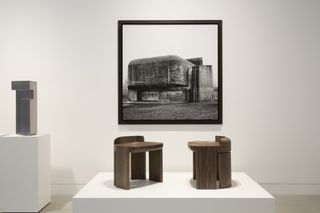
Don Cameron, ‘Nevers Stool’, 2022, in walnut with an image of its inspiration, Claude Parent’s church in Burgundy, Nevers, 2020. Image courtesy the artist
Now Cameron has used these images as the point of departure to design a limited-edition furniture collection for Gallery Sally Dan-Cuthbert in Sydney. Cameron’s furniture includes a desk, a coffee table and a stool made in solid timber, a modular sofa, and a series of floor lamps fabricated from steel. He calls the collection ‘Translations’, and each piece makes an overt reference to one of the subjects of his photographs.
He looks for ways to achieve the surface patinas and forms that he found in his photographs, and to move them from one category to another. A building is translated into a photograph, which in turn becomes the starting point for an object. Design, architecture and sculpture merge imperceptibly into one another.
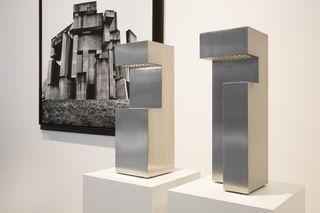
Don Cameron, ‘Bloc Floor Lamp 01 / Polished’, 2022, with an image of its inspiration, Fritz Wotruba’s church in Vienna, Vienna, 2020. Image courtesy the artist
While he cites the distressed concrete of a ruined observation post in Alderney as the visual source for his desk with a drawer, this is a piece of accomplished and refined furniture. His monolithic stool refers to the massive structure of Claude Parent’s church in Nevers, Burgundy, in its monolithic weight, but it is put together from carefully worked black American walnut, rather than concrete with a rough board-marked surface that shows the timber moulds in which it was cast.
He uses the stacked forms of Fritz Wotruba’s church in Vienna as the basis for the extruded rectangular forms of his floor lamps, which are made from patinated sheet steel. His modular sofa has a steel structure to support its sheet steel surfaces, in the manner of the Yugoslav memorials.
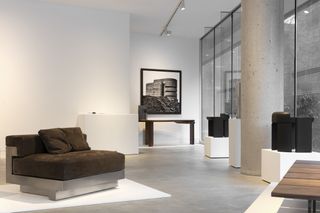
‘Bloc Sofa Element’, 2022. ‘Alderney Desk’, 2022, alongside an image of its inspiration, a ruined observation post, Alderney, 2020. ‘Nevers Stool in Ebonized Walnut’, 2022. Image courtesy the artist
Cameron is not a maker himself, but in his close collaboration with skilled wood and metal workers and upholsterers, he becomes a participant in the creative process, rather than the silent observer he was as a photographer. The individual components for the desk, the stool and the coffee table are cut and shaped using a milling machine, programmed with a digital translation of Cameron’s own freehand sketches. They are then finished by hand, in one of Sydney’s few workshops to combine traditional woodworking skills with automated machine tools, operated with computer numerical control.
Wallpaper* Newsletter
Receive our daily digest of inspiration, escapism and design stories from around the world direct to your inbox.
The idea that different forms of visual creativity can carry the same sensibility is not new. A Mondrian canvas, and a Rietveld chair are clearly related, without the one attempting to be a representation of the other. Importantly, Cameron’s long experience collecting the work of some of the most distinguished furniture designers of the 1950s and 1960s ensures that his furniture is not overwhelmed by the weight of content that it is carrying.
INFORMATION
‘Don Cameron: Translations’, 2 September – 2 October 2022 at Gallery Sally Dan-Cuthbert, Sydney, gallerysallydancuthbert.com
-
 Step inside this Upper East Side jewel box apartment
Step inside this Upper East Side jewel box apartmentThis radiant Lexington Avenue home is a harbinger of good things for the Upper East Side, and the latest focus of The Inside Story, our series spotlighting intriguing and innovative interior design
By Anna Solomon Published
-
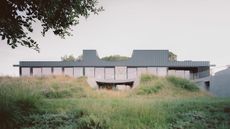 A new hilltop California home is rooted in the landscape and celebrates views of nature
A new hilltop California home is rooted in the landscape and celebrates views of natureWOJR's California home House of Horns is a meticulously planned modern villa that seeps into its surrounding landscape through a series of sculptural courtyards
By Jonathan Bell Published
-
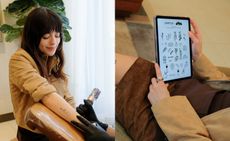 Is a tiny tattoo the best holiday souvenir? Kimpton Hotels think so
Is a tiny tattoo the best holiday souvenir? Kimpton Hotels think soIn partnership with Tiny Zaps, Kimpton Hotels is bringing city-inspired tattoo pop-ups to five U.S. locations
By Sofia de la Cruz Published